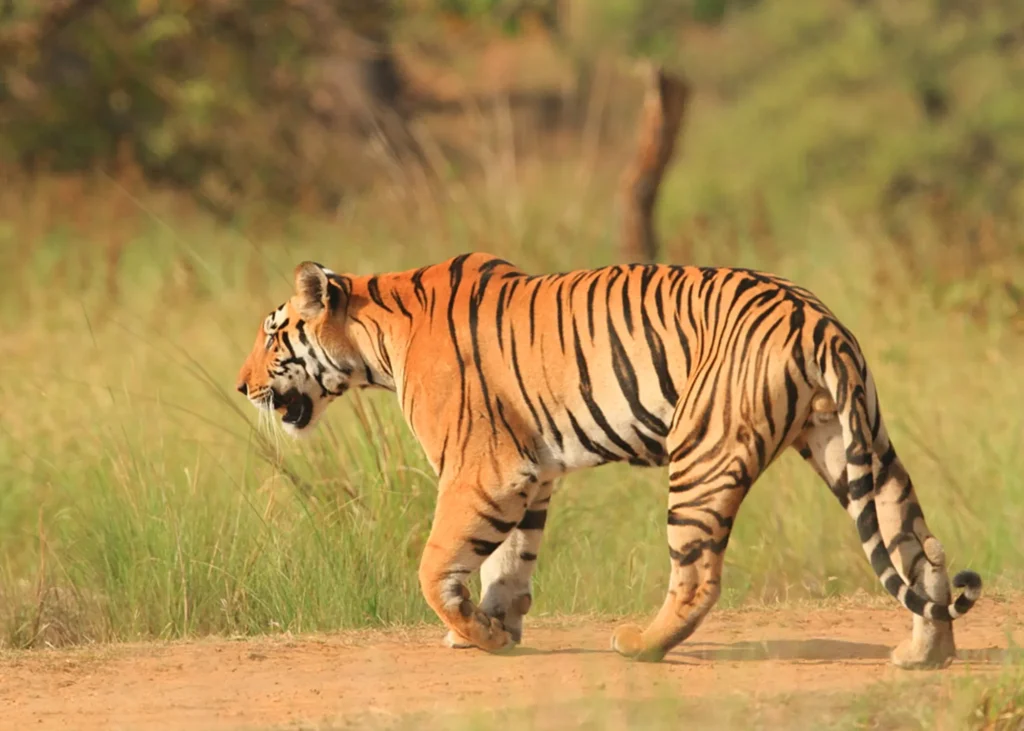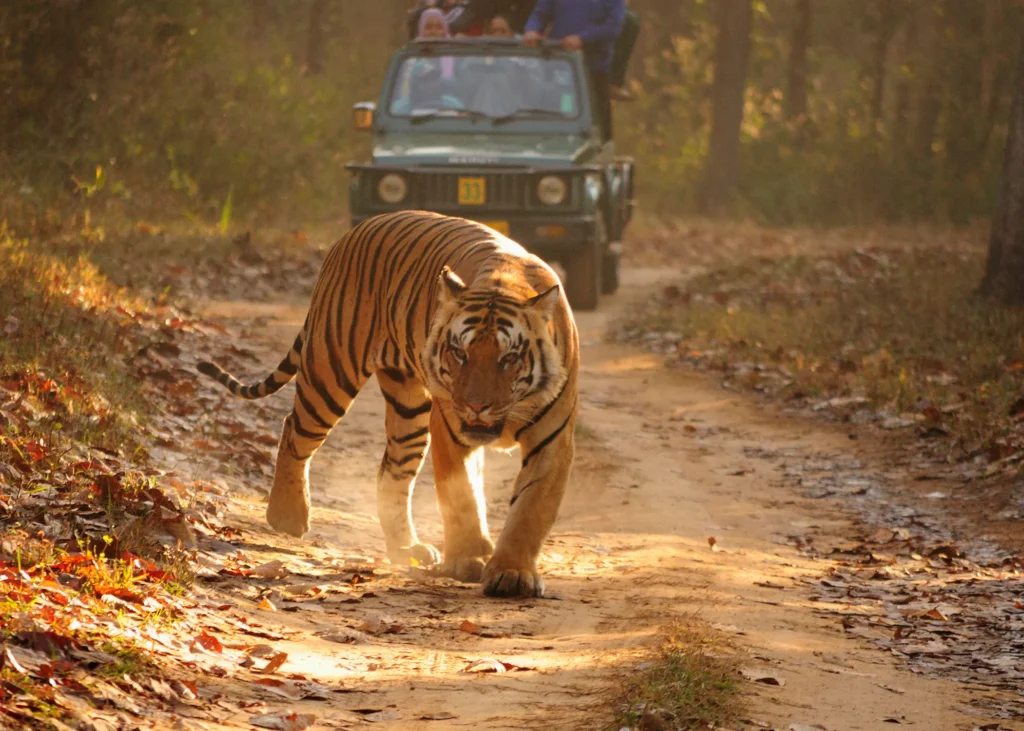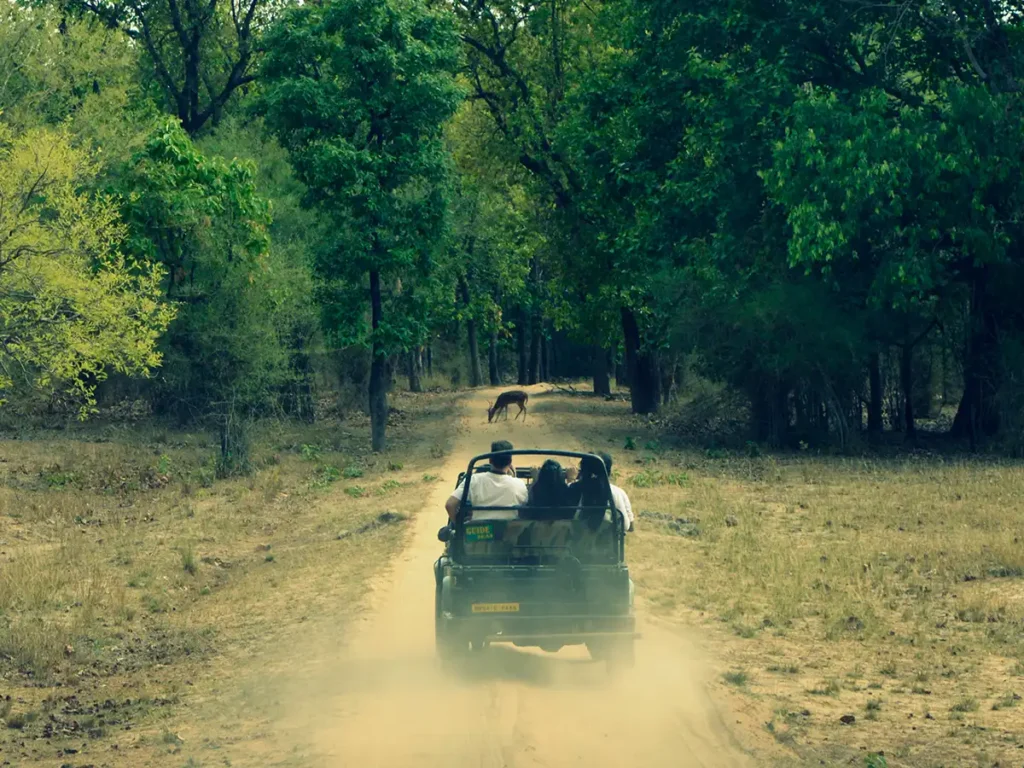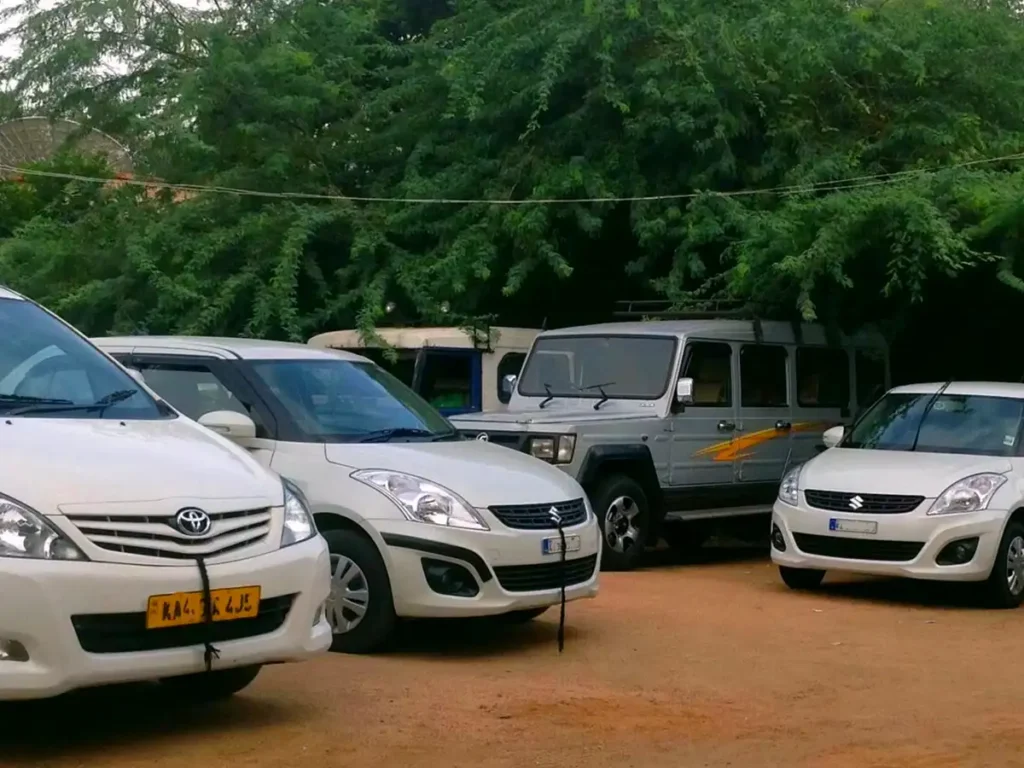Nestled in the heart of India, Kanha National Park stands out as one of the country’s most iconic wildlife havens. Designated as a tiger reserve in 1973, this sprawling wilderness has since become a symbol of conservation success and a must-visit destination for nature enthusiasts from around the world.
With its lush Sal forests, verdant grasslands, and thriving populations of Bengal tigers, hard ground barasingha, and other remarkable species, Kanha offers a truly immersive wildlife experience that is unparalleled. Join us as we delve into the rich history, diverse ecosystems, and captivating visitor experiences that make Kanha a true jewel in India’s crown of protected areas.
Kanha’s History and Milestones
Here are the key milestones in Kanha National Park’s history:
| Year | Milestone Description |
|---|---|
| 1973 | Kanha given the status of a tiger reserve. |
| 1974 | Supkhar area declared Sanctuary (487.72 sq. km.). |
| 1976 | The total area of Kanha becomes 940 sq. km. |
| 1977 | Surrounding areas identified as Buffer Zone. |
| 1977-78 | Indian Board for Wildlife, Chairman's Challenge Trophy for the Best Managed National Park/Sanctuary. |
| 1982 | First International Workshop on wildlife management was organized at Kanha. |
| 1983 | The total area of Phen Wildlife Sanctuary is 110.74 sq. km. and was notified. |
| 1992 | The first park interpretation package in the country was set up at Kanha. |
| 1995 | Notified and taken over of buffer zone under unified control of Tiger Reserve. |
| 1999-2000 | National Tourism Award "Best Maintained Tourism Friendly National Park/ Wildlife Sanctuary." |
| 2005 | The first experiment on raising orphaned cubs started with the 2 orphaned cubs in Kanha Tiger Reserve. |
| 2005-06 | In the "Management Effectiveness Evaluation of Tiger Reserves in India", Kanha Tiger Reserve was categorized as "Very Good". |
| 2010-11 | In the "Management Effectiveness Evaluation of Tiger Reserves in India", Kanha Tiger Reserve was categorized as "Very Good". |
| 2011 | Reintroduction of 50 blackbuck into Kanha. |
| 2011 | Madhya Pradesh State Tourism Award "Tourist Friendly National Park Director". |
| 2011-12 | Reintroduction of 50 gaur from Kanha into Bandhavgarh tiger reserve. |
| 2012 | National Tiger Conservation Authority Award for Excellence (2010-11) "Habitat Management". |
| 2014 | Winner of the "India-UNDP Biodiversity Conservation Award". |
| 2014-15 | In the "Management Effectiveness Evaluation of Tiger Reserves in India", Kanha Tiger Reserve was categorized as "Very Good". |
| 2015 | Trip Advisor Certificate of Excellence Award Winner. |
| 2015 | Reintroduction of hard ground barasingha into Satpura tiger reserve. |
| 2016 | The successful integration of these reclaimed lands of Sukdi and Ajanpur villages into the surrounding natural wildlife habitat with adequate managerial inputs for grassland development. This has resulted in the restoration of a population of around 100 hard ground barasingha. This grassland complex is going to play an important role in the building up of a large population of barasingha in the tiger reserve. |
| 2016 | NTCA Award given by the Hon'ble Prime Minister for Excellence in Recognition of Outstanding Performance in the field of active management. |
| 2017 | SKOCH Order-of-Merit award in New Delhi, to become one of the top-50 Swachh Bharat Projects in India for Clean India Mission. |
| 2017 | India Tourism Award to the Kanha Coffee Table Book under the "Best Publication in the English Language" category. |
| 2017 | Awarded the second prize by the State Government for excellent conduction of Anubhooti programme at Kanha. |
| 2017 | Kanha has been certified as meeting all the requirements of CATS and is now an approved tiger reserve in India. |
| 2021 | Consistent management of a viable population of tigers (presently 118) for several years. |
| 2023 | Revival of hard ground barasingha population from 66 in 1970 to around 1100 today. |
Biodiversity and Ecosystem Highlights
Here are the key highlights of Kanha National Park’s biodiversity and ecosystems:
Diverse Habitats: Kanha features a range of interconnected ecosystems, including lush Sal forests, vast grasslands, and dynamic riparian habitats along rivers and streams.
Rich Biodiversity: The park is home to a remarkable array of wildlife, with iconic species like the Bengal tiger, hard ground barasingha, leopard, sloth bear, wild dog, and over 300 bird species.
Tiger Conservation Stronghold: Kanha is a crucial tiger conservation area, playing a vital role in the recovery of the tiger population. The park has consistently maintained a healthy tiger population, with 118 individuals as of 2021.
Successful Species Reintroductions: Kanha has seen successful reintroduction efforts for species like the blackbuck, gaur, and hard ground barasingha, helping to restore their populations both within the park and in neighboring protected areas.
Grassland Restoration: The integration of reclaimed lands in the Sukdi and Ajanpur villages has led to the restoration of a population of around 100 hard ground barasingha, a significant achievement in the park’s conservation efforts.

Visitor Experience and Attractions
Visitor Experience and Attractions:
Kanha offers visitors a range of engaging experiences and attractions:
Safari Zones: The park is divided into various tourist zones, each with designated safari routes that provide opportunities to spot wildlife like tigers, deer, and birds.
Interpretation Centers: Kanha features well-designed interpretation centers that educate visitors on the park’s ecology, history, and conservation efforts.
Cultural Significance: The park is home to local tribal communities, providing insights into their traditional lifestyles and connections to the land.
Tourism-Friendly Infrastructure: Kanha has been recognized for its well-maintained, visitor-friendly infrastructure, earning awards such as the National Tourism Award for “Best Maintained Tourism Friendly National Park/Wildlife Sanctuary.”

In Conclusion
Kanha National Park stands as a true gem in India’s crown of protected areas, a testament to the power of conservation and the resilience of nature. From its rich history as a pioneering tiger reserve to its ongoing role as a biodiversity oasis, Kanha continues to captivate visitors with its awe-inspiring landscapes, thriving wildlife populations, and tireless efforts to safeguard its natural heritage.
As you plan your journey to this magnificent park, be prepared to be immersed in a world where the Bengal tiger roams freely, the hard ground barasingha grazes in restored grasslands, and the symphony of birdsong fills the air. Kanha is not just a national park – it is a living, breathing testament to the enduring strength of the natural world, and a place that will leave a lasting imprint on all who are fortunate enough to experience its wonders.






